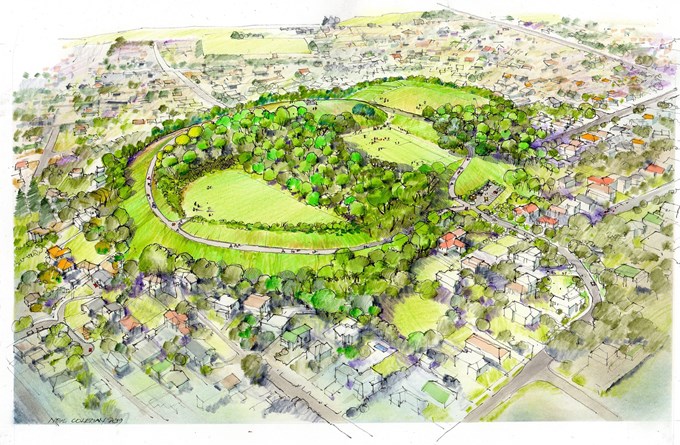The programme to restore native vegetation and habitat for native wildlife on Ōwairaka / Mt Albert maunga continues in November with the removal of exotic trees.
The first phase of the restoration was completed in August this year with the planting of 2700 native shrubs during a community planting day attended by around 100 local residents. This was the first instalment of 13,000 natives that will be planted over the next few years.
The second phase is the removal of around 345 exotic trees from 11 November through to mid-December. This includes species identified as pests in the Auckland Regional Pest Management Strategy, such as Olive and Monkey Apple.
Restoring and reconnecting native ecological networks
Paul Majurey, Chair of the Tūpuna Maunga Authority says that restoring and enhancing the original features of the maunga where possible is important.
“The starting point for the Authority is our commitment to honouring the maunga as some of Auckland’s oldest and most important natural, cultural and archaeological landmarks. We apply this lens in all of our work to preserve what remains of the original form and historic features of the maunga and restore what we can.”
The majority of maunga in Tāmaki Makaurau, including Ōwairaka / Te Ahi-kā-a-Rakataura, were important Māori pā (settlements). The management approach recognises that the maunga are therefore separate from other parks and open spaces in that they are wāhi tapu – sites of immense spiritual, ancestral, cultural, customary, and historical significance to Mana Whenua.
“In 2016 the Authority released the Tūpuna Maunga Integrated Management Plan to establish a set of guidelines for consistent future care of these iconic places in line with cultural and natural heritage values."
"In the biodiversity stream of the Tūpuna Maunga Integrated Management Plan a priority goal is restoring and reconnecting native ecological networks within and between the maunga and the wider landscape. Proactive management of exotic plant species and reintroducing indigenous flora and fauna is a vital step towards that outcome,” says Majurey.
Preserving sightlines and enhancing safety
“Another important management objective is preserving and enhancing sightlines to and from the maunga so that they are markers in the landscape and their cultural and natural features are visually apparent.”
The safety of visitors and neighbouring properties has also been taken into account.
“There have been various examples of large trees being uprooted on different maunga during storm events, including at Ōwairaka / Mt Albert. For example, of the trees that fell during the ‘super storm’ of 10-11 April 2018, a massive Eucalyptus tree fell across the main pedestrian thoroughfare on Ōwairaka / Mt Albert. Had anyone been there at the time they could have been killed, and if the tree had fallen the other way, it would have gone through a house,” says Majurey.
Visitor access
Ōwairaka / Mt Albert will remain open to visitors for most of the tree removal period, but people are asked to avoid areas where arborists are working. The maunga will be completely closed on days a helicopter is assisting tree removals. Signage explaining the project and temporary closures will be at entrance points.
More information about the Tūpuna Maunga Authority, including the Tūpuna Maunga Integrated Management Plan, can be found at maunga.nz.


